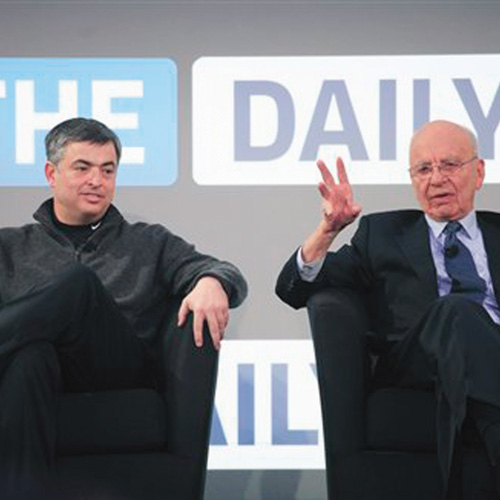Journalism experiments often fail. That’s part of the game. But what can we learn by looking in the rearview mirror at some of the high-profile flops in digital journalism past?
That’s what we tried to find out by looking at a few experiments that arrived with fanfare at the time of their launch but didn’t last long. What can the current journalism experiments learn from their failures?
Each venture had its unique pitfalls, of course. But there are a few universal lessons. The most obvious is that having backing from a big name is no guarantee of success. Here’s another one: Beware of “quick money” from investors who aren’t committed. Many digital ventures fail because the stakeholders aren’t patient enough to wait for the idea to mature. Finally, before thinking about how much money you’re going to make, think about building an audience and serving a specific need of your potential customers. Now on to the flops …
The Daily
February 2011-December 2012
What was it? First newspaper created especially for iPad
Who bankrolled it? Rupert Murdoch’s NewsCorp
Size of investment: $30 million initially, then $30 million
more later
Size of the staff: 170 employees
The Daily was a (daily, of course) newspaper developed for the iPad when it had been on the market for less than a year. The weekly subscription was 99 cents. It managed to get around 100,000 subscribers, but it needed more than a million to break even. The content was not perceived as unique enough to charge people for it, and it didn’t take advantage of two opportunities generated by the Web: updates throughout the day, and hyperlinks to the rest of the internet.
Patch by AOL
June 2009-January 2014
What was it? Network of 800+ local news sites
Who bankrolled it? Purchased by AOL in 2009 for $7 million
Size of investment: Over $200 million investment (first
two years)
Size of the staff: 1000+ employees
AOL bought Patch in 2009 when it was a network of only 30 local news sites, and quickly expanded to over 800 in the following years. This rapid expansion led to a wide range of quality across sites (one reason was that it included citizen journalism in the content mix). It also led to a lack of profitability at most of those sites because they didn’t have enough audience to generate ad revenues. It was sold to Hale Global, a turnaround specialist, and became a much less ambitious enterprise.
Project Thunderdome
March 2011-April 2014
What was it? Centralized news system to support 100+ local newsrooms
Who bankrolled it? Digital First Media (former Journal Register)
Size of investment: Around $5 million per year
Size of the staff: 50+ staff
Project Thunderdome’s idea was to produce and distribute content that would enrich coverage from DFM’s local newsrooms, along a range of verticals such as health, travel, food, and tech. The national news was produced by dfm staff in New York and by media partners. Led by Jim Brady after he left tbd (he now has founded Billy Penn), the project was still in its rollout phase, with only half of the planned verticals already implemented, when it was interrupted in a $100 million company-wide cost-cutting effort at DFM.
TBD
August 2010-February 2011
What was it? General interest community news site serving the Washington, D.C. area
Who bankrolled it? Allbritton—owner of Politico and local TV
station WJLA
Size of investment: Undisclosed
Size of the staff: 50+ staff
TBD wanted to do for local news what Politico did for political coverage. It focused on community engagement, with heavy use of social media and strong collaboration of area blogs. It had a great staff, and Allbritton declared it would wait three to five years for it to mature. Only six months after launch (and two months after general manager Jim Brady left due to differences about the direction the site was taking), TBD laid off half of the staff and became a niche site focused on arts and entertainment that survived for another year. It did not get enough audience to generate ad sales to sustain the model.
André Tassinari is a Brazilian engineer who completed an MBA in London and an MS at Columbia but still doesn’t know how to save journalism.

